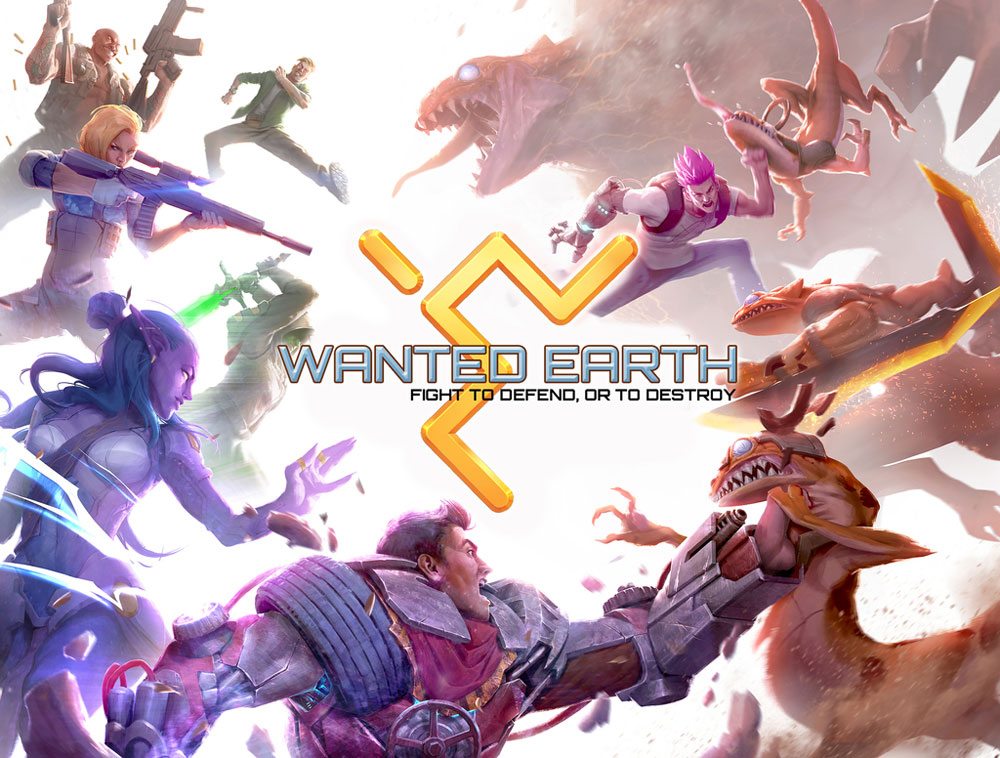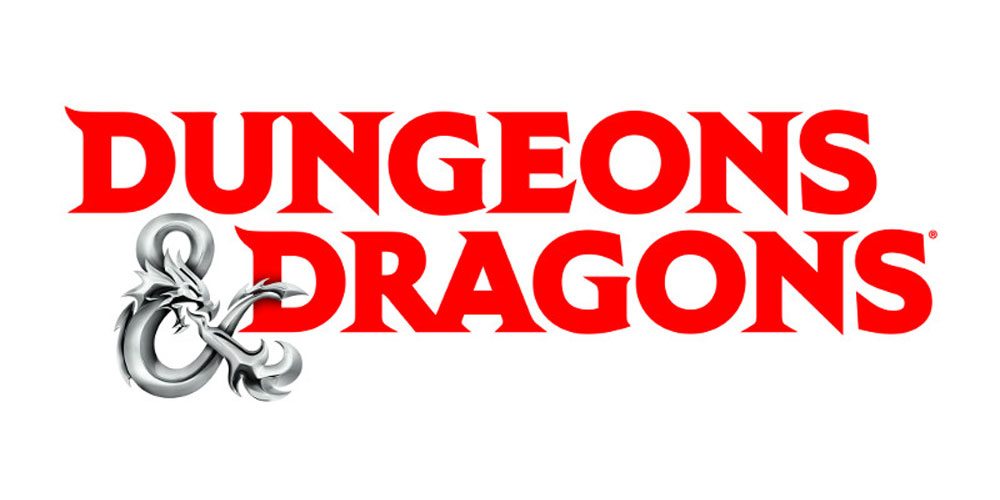Aliens have discovered our planet, and now they’ve arrived to take it from us—but not if these heroes can stop them!
At a glance: Wanted Earth is a tactical combat game for 2 to 7 players, ages 12 and up, and takes 1–2 hours to play. It’s currently seeking funding on Kickstarter, with a pledge of $89 for the base game, plus shipping. The game is a miniatures battle game so there are a lot of rules, though it’s designed to be a little easier to set up and get going than your average wargame.
New to Kickstarter? Check out our crowdfunding primer, and visit our Kickstarter curated page for more projects we love.
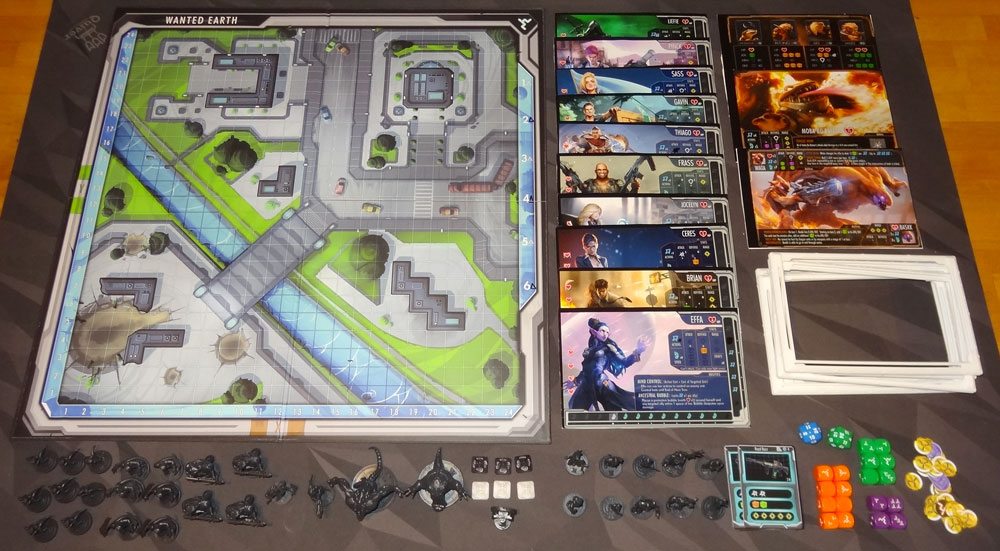
Components
My review is based on a prototype, though I have to say that it’s a fairly impressive prototype: there were 3D-printed miniatures, custom dice, and a lot of finished artwork. Some of the exact powers were still being playtested and tweaked, so the final game may still change from what you see in my photos. (Also, the prototype I was sent included some extras that are planned stretch goals, such as extra hero characters.)
- Game Board
- 47 Item cards
- 7 Hero miniatures
- 7 Hero boards
- 23 Goigon miniatures
- 3 Goigon boards
- 1 Goigon Portal miniature
- 6 Enigma miniatures
- 3 Force Field tokens
- 30 Credit tokens
- 1 Round Counter token
- 8 orange dice
- 6 green dice
- 4 purple dice
- 2 Coordinates dice (24-sided)
- 6 Hero board plastic frames with 3 sliders each
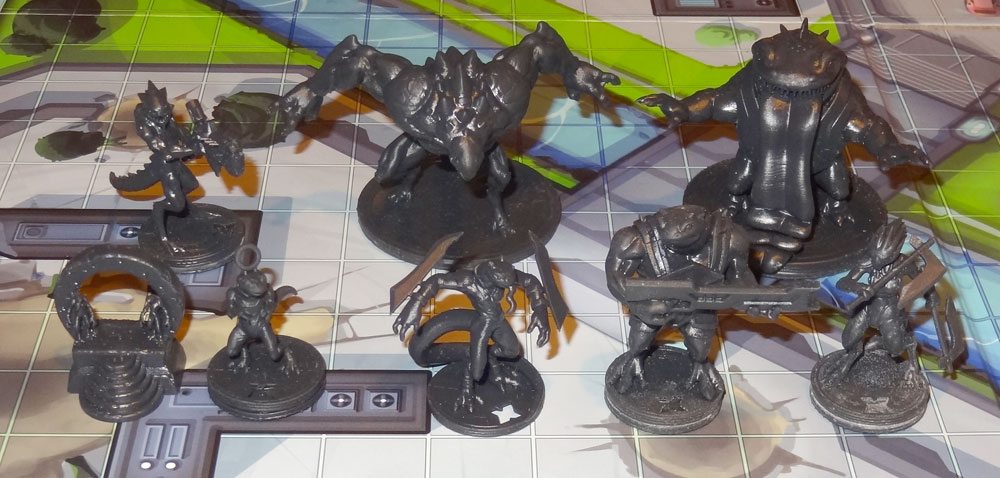
Some of the alien miniatures have rotating bases so that you can track hit points—these were not as functional in the 3D-printed versions since it’s all printed in one piece, but the Wanted Earth team has been working with various manufacturers to figure out how to make it happen. However, I also suggested that there may be easier (and cheaper) ways to track health, particularly on the grunt aliens who only have two hit points. It seems like a lot of added expense just to track one hit before the piece is killed and removed from the board.

There are also plastic frames with sliders to track health, movement, and action points—the hero character boards slide into the frame, and then the sliders match up with the icons on the boards. This is another feature that I think is cool, but not entirely necessary—I’d be perfectly happy just tracking those three things with a wooden cube on the board, or clips that attach directly to the player board.
I expect that there are some backers who will really appreciate these sorts of added touches, but I’m usually okay with cheaper and simpler myself.
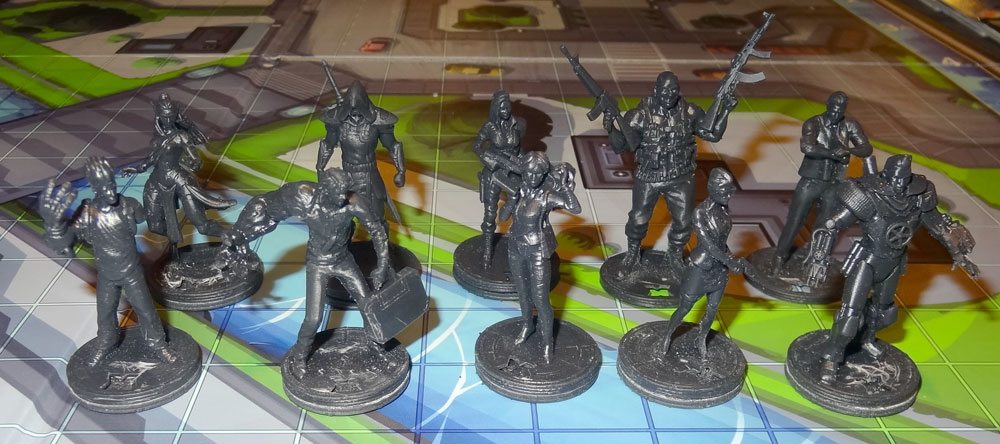
The artwork is pretty nice, and I was impressed with the quality of the miniatures even though these were 3D-printed. The oversized alien bosses are especially impressive, but the heroes are also fun and expressive. The heroes (mostly human, though there are some aliens in there as well) all have different abilities and little back stories. I liked that there was some ethnic diversity in there, though the women all tend to have the same body type, whereas the men come in a couple different sizes and shapes.
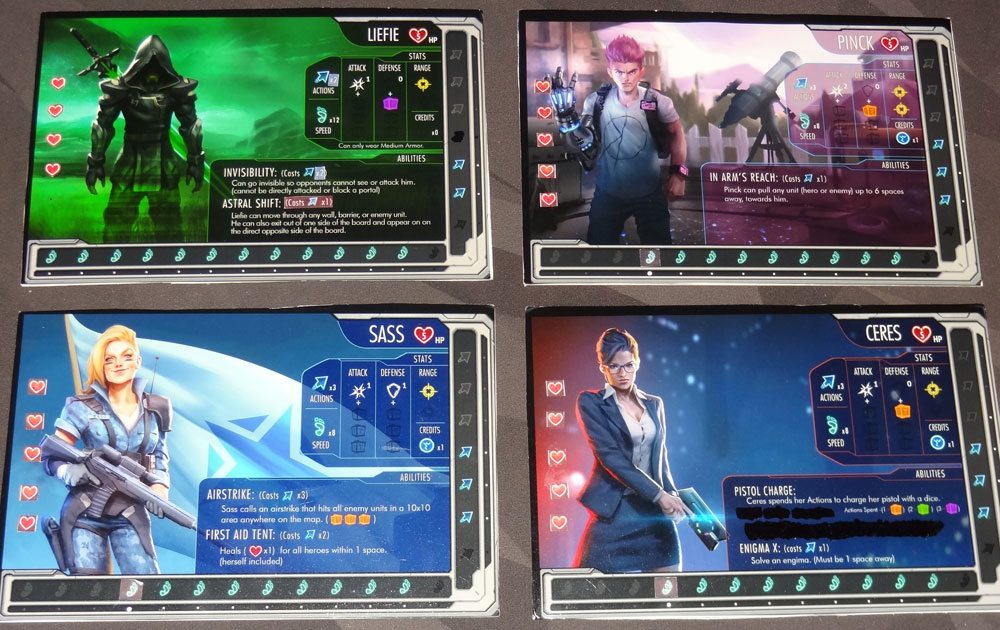
How to Play
There are two modes of play: one pits a team of heroes against the aliens, and the other is a PvP free-for-all with all the heroes fighting each other (and the aliens). I’ll explain the team game first, since it seems to be the primary game mode, though I won’t go into too much detail.
You’ll always have three hero characters in play, regardless of the number of players, against one player controlling the alien faction. The heroes’ objective is to defeat the alien overlord, who appears after Round 6; the aliens’ objective is for the overlord to survive 6 rounds after it spawns or defeat all the heroes.

The hero players secretly select which characters they will start with, and the alien player chooses one of the two underlords, and then they’re all revealed. The alien player will place the portal on the board, and spawns some units near the portal, and some units in random spaces on the board. Generally, the alien player has a number of credits to spend, and can choose which units to bring in each round up to the credit limit. The heroes will choose a starting location on the board, and they must all be adjacent to each other when they begin.

The game has two halves: 6 rounds before the alien overlord appears, and up to 6 rounds after it appears.
During the first half, the aliens will spawn, an enigma appears in a random location, the heroes take their turn, and then the aliens take their turn.
The enigmas are objects that the heroes may spend actions to “solve,” gaining a bonus if they do so. There are two types of enigmas: one will extend the round when solved, giving the heroes and aliens each another action round without more aliens spawning; the other will let heroes recruit a new character (but only if they have fewer than 3 characters on the board at the time).
The heroes may spend their actions and movement in any order they wish. You must spend actions to attack, buy equipment, buy health, trade items with other heroes, and use certain special abilities.
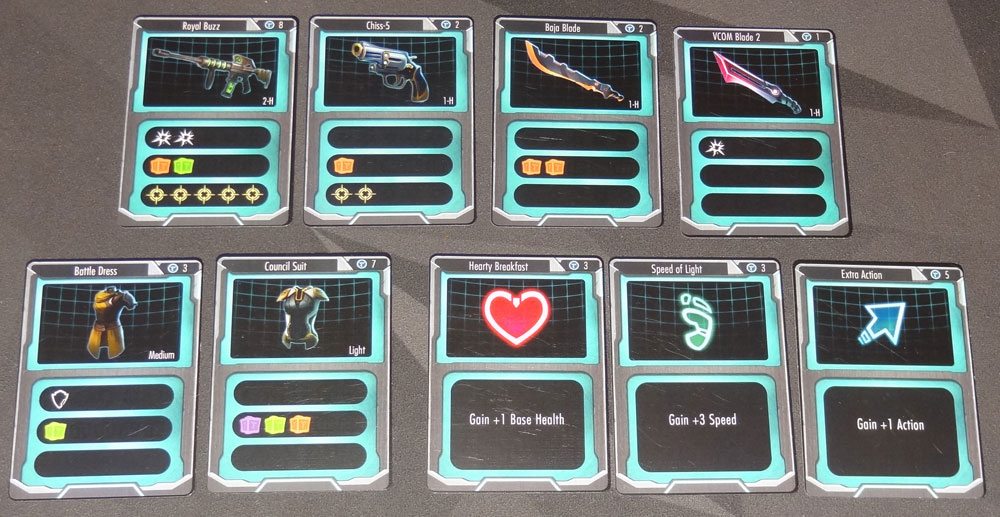
There’s a market of special items that may be purchased for the heroes—you start with a certain amount of money, and you earn more when you kill aliens. Items include weapons and armor, as well as added speed, health, and actions. Armor and weapons will indicate which dice you get to roll when using them; generally each character can only wear one armor and wield up to two hands’ worth of weapons. You can carry more than that, but you can only equip that much per round.
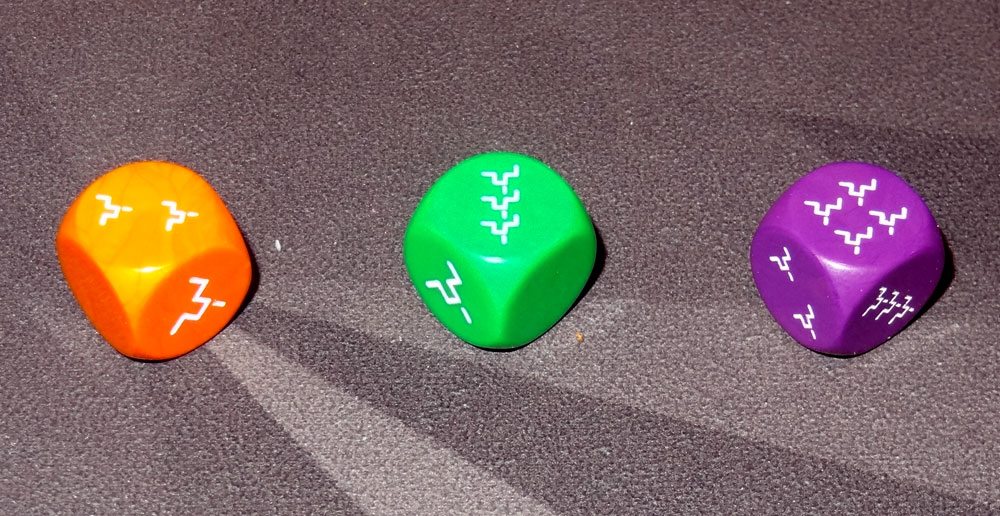
When attacking, you get to roll a number of dice (based on your character and equipped weapons) and then add any static damage bonus to the result. The defender will roll defense dice, plus any static defense bonus. If the attack value is higher, the target takes 1 hit point (regardless of how big the difference is). There are three different colors of dice: the orange dice are the weakest, ranging from 0–2 on the faces. The purple dice are the strongest, and can roll up to 4 on a single die.
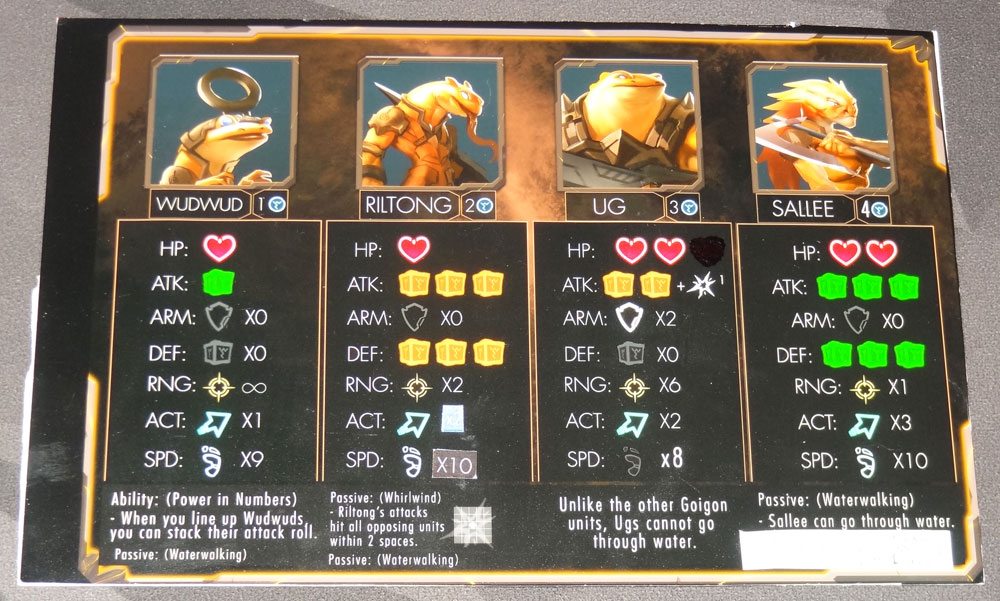
The aliens, like the heroes, also have movement points and a number of attacks they can make. Each of the units may also have other special abilities. For instance, the little Wudwud lizards can line up in a row to combine their attacks into one single roll, increasing their odds of getting a hit. Many of the alien units can also walk across the water, rather than having to work their way over to the bridge like the heroes.
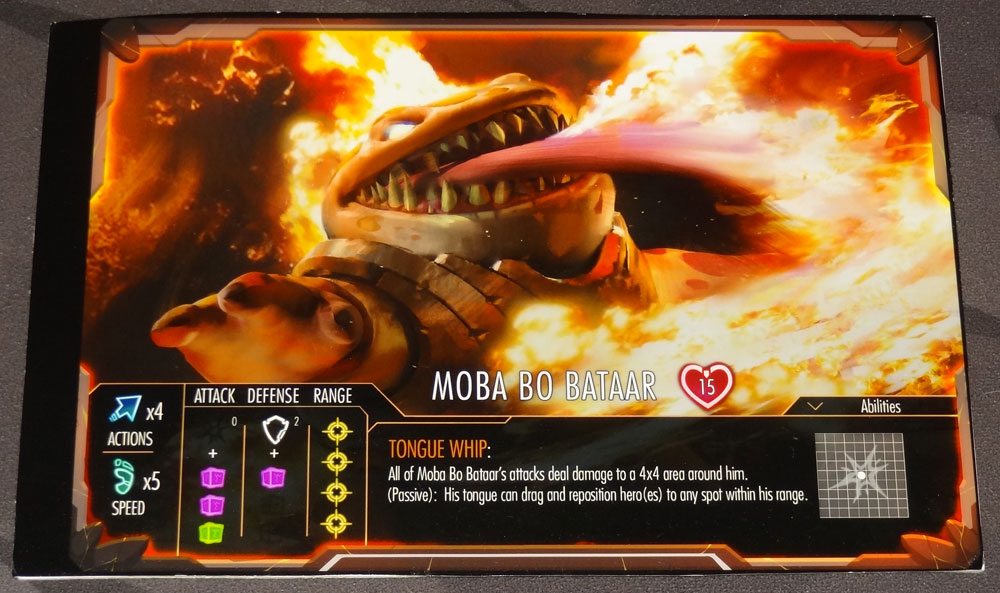
After the end of the 6th round, the alien overlord spawns on the board. From then on, no more aliens or enigmas spawn, and the heroes and aliens just take turns until either the overlord is dead or 6 rounds have passed, and then the game ends. If the overlord is defeated, the heroes win; otherwise, the aliens win. The aliens can also win by eliminating all of the heroes.
The PvP version is similar, but there are two hero teams of three characters each, and the alien player uses two underlords instead of one. In this version, the heroes must eliminate the overlord and the other human team to win. Also, the alien player gets more credits to spend on spawning aliens each round.
The Verdict
Although Wanted Earth looks pretty massive, the gameplay itself isn’t too difficult. The style of game reminds me a little of Last Night on Earth, where you have a number of heroes fending off the monsters, which are plentiful but weaker. Wanted Earth is less complex than Last Night on Earth, though—for instance, the equipment cards have standardized effects so you don’t need to flip through a rulebook to look up keywords before using them. I do think the designers did a fairly good job of streamlining the rules. (The rulebook was still being worked on, though, and it will be crucial to have a well-written rulebook that doesn’t leave a lot of unanswered questions.)
Also, like Last Night on Earth, it does feel sometimes like the hero players get to have a lot more fun: their characters have some crazy special abilities, and there’s even a chance to spawn new heroes if somebody dies, bringing in another set of powers. The aliens do have several different units, but they’re generally weaker and—more to the point—they can’t be upgraded. When I played at GameStorm, the alien player was jealous of all the equipment that the humans were able to buy to upgrade themselves. For him, the game got a lot more interesting once the overlord spawned, because he finally had a piece that stuck around for more than one or two rounds before dying.

That’s not to say that the aliens aren’t a good match: in this game the humans won, but only in the 5th round after the overlord appeared. And even then, it was largely because the alien player had been rolling really poorly throughout almost the entire game. One human player was rolling 2s on the orange dice (1/6 chance) while the alien player was rolling blanks on the green dice (1/6 chance), which made for somewhat lopsided skirmishes.
Which brings me to the topic of luck: the different types of dice does mean that you can work to stack the odds in your favor, and you have a good idea before attacking of how likely it is that you’ll do some damage. However, except for purple dice (which have no blanks) and the static attack/defense bonuses, nothing is guaranteed. You might get lucky and roll a fantastic attack against a heavily-armored opponent, or you might botch a heavy attack against an unarmored grunt. What’s important to remember is that rolling higher doesn’t do more damage—you only do 1 damage per attack no matter how many dice you rolled. However, having more actions (or attacks) does give you the opportunity to strike more than once, so that’s where strong attacks or defense really tend to pay off.
If you like games to be purely strategic and you don’t like the random chance element, then Wanted Earth might be a little too swingy for you, but in my experience many battle games of this type rely on dice at least to some extent. We found that the unpredictable results gave it some nice tension … at least until we concluded that the alien player was always going to roll poorly, at which point we lost the element of surprise.
The enigmas are an interesting feature—they spawn during the first six rounds, alternating between the round-extension enigmas and the hero-reinforcement enigmas. The heroes can get a big bonus if they solve one, but it’s fairly costly at 3 actions. Generally, solving an enigma means that particular hero isn’t going to be doing much else that round, but if you’re down a hero, then it could be absolutely crucial to get another character back on the board. The round-extension enigmas give the heroes and aliens another turn, but the key is that the aliens skip their spawning phase during this extra round, which gives the heroes an advantage. Since the enigmas are placed on random locations on the board, the heroes may have to make tough decisions about whether to pursue them or not. If it’s near you already, sure, why not? But what if it’s in the middle of a pack of aliens—is it worth having your character be a sitting duck for a turn?
I did like the various abilities of the hero characters—it’s fun plotting out a strategy that makes the best use of their powers, and it’s cool to switch things up by adding another character if one gets killed. I did feel like Sass’s air strike ability was perhaps too powerful—the alien player had a hard time countering it for the first half of the game—but I know everything is still undergoing tweaking and fine-tuning.
All in all, if you like this type of game—fancy miniatures, different player powers, tactical strategy with a good dose of luck—then Wanted Earth seems like a fun title with relatively easy entry. It won’t take you an hour to set up and hours to play. If you already have a favorite tactical miniatures game (particularly if it’s more complex), then Wanted Earth might not be enough to satisfy you. But if you’ve never given this type of game a try, it may be a nice medium-weight way to get started in this genre.
For more information or to make your pledge, visit the Wanted Earth Kickstarter page!

